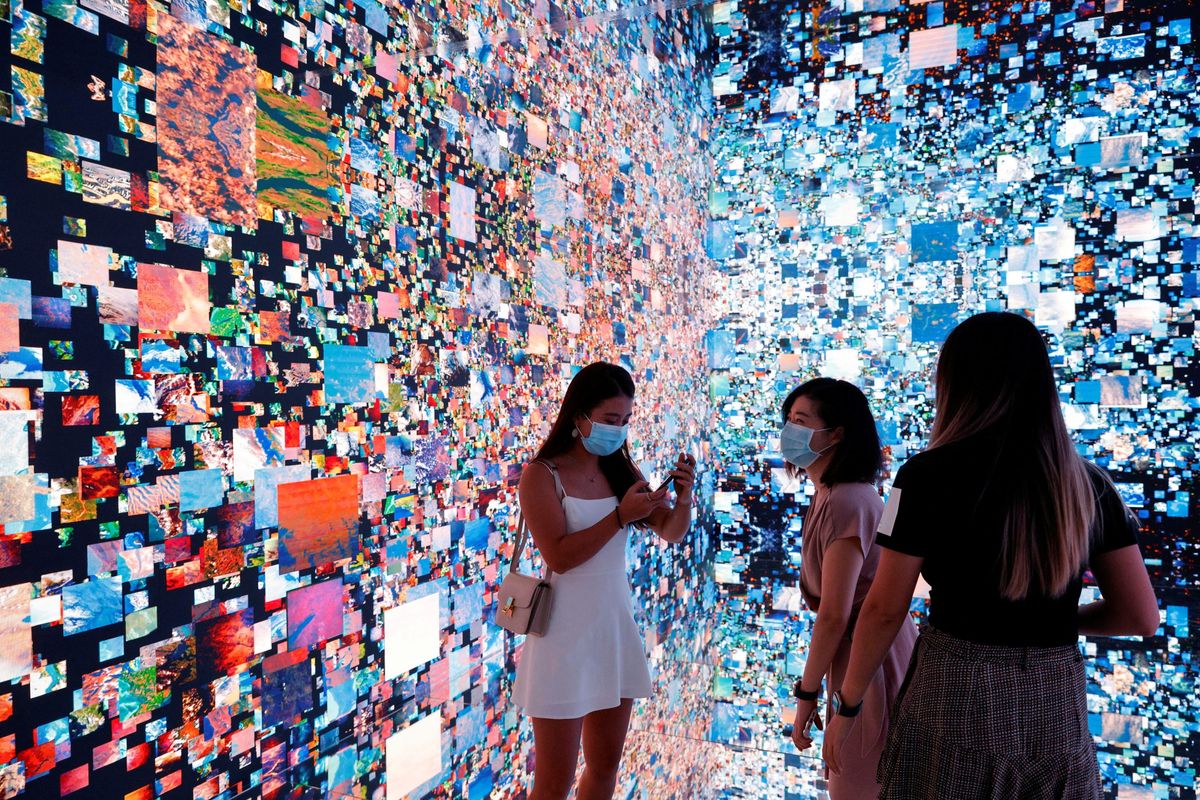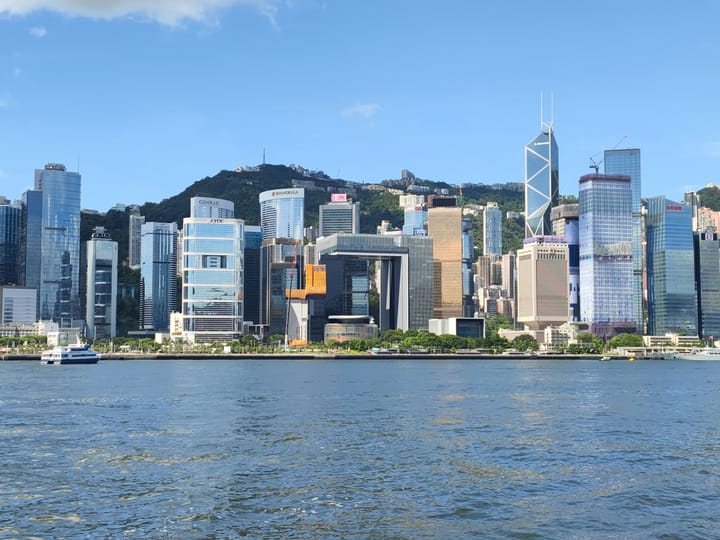Hong Kong has become Asia’s new NFT epicenter

A few minutes every morning is all you need.
Stay up to date on the world's Headlines and Human Stories. It's fun, it's factual, it's fluff-free.
“This year, Hong Kong has effectively established itself as the world’s second city for Contemporary Art after New York.”
What are NFTs again?
- NFT stands for Non Fungible Token, and the term is typically used to describe pieces of art that are traded using the same kind of blockchain technology that cryptocurrencies use.
- The difference between an NFT and a traditional cryptocurrency is that cryptocurrency (or any currency for that matter), the price of one unit of the currency, is equal to any other single unit of that currency.
- If a Bitcoin is, say, US$40,000, then it doesn’t matter whose it is because they’ll all be worth the same amount.
- But an NFT is a single unit meaning that its price goes up and down by itself rather than being tied to something else. It’s also entirely unique, meaning one NFT can’t be replaced with anything else. It is because of this that NFTs have been compared to a digital passport. Every single NFT contains an entirely unique identity that can’t be transferred.
- And, because they’re sold as single units (or occasionally as numbered units of limited supply), the value of each NFT works on its own.
- NFTs got huge earlier this year, and although the hype around them has calmed down a little bit, they still have a market cap of about US$1 billion right now. They are being credited as the force pushing contemporary art sales to a record of US$2.7 billion over the last year.
So, does that mean the art industry did well during the pandemic?
- Not entirely. According to annual reports from Artprice, 2020 was actually a relatively lousy year for contemporary art, with art auction turnover down 21% mainly because major collectors decided to postpone sales until after lockdowns.
- With that said, momentum in the industry wasn’t as depressed as many people thought it would be.
- According to Thierry Ehrmann, chief executive officer and founder of Artprice, “Photography and prints have been particularly successful in this new online environment and this year, we have seen the sensational arrival of completely dematerialised artworks: NFTs,”
- “With the help of strategies offering a large number of works at relatively affordable prices, Contemporary creation has withstood this crisis better than any other creative period,” he added
- Ehrmann’s point is only validated by the fact that some NFTs have fetched massive prices, such as American artist Beeple’s work “Everydays: the First 5000 Days,” which sold for US$69.3 million.
- It didn’t just sell through some backchannel online either – it was held on an auction through reputable London-based auction house, Christie’s.
How’s Hong Kong’s art scene growing?
- Well, even though many big auction houses, like Christie’s, Sotheby’s and Phillips are headquartered elsewhere, they all have a significant presence in the former British colony, Hong Kong.
- In fact, according to Artprice’s 2021 report, of the five largest auction houses in Asia, three of them are in Hong Kong.
- “[Hong Kong’s] unsold rate is the lowest in the world: just 10% versus a global average of 30%. Hong Kong was also the period’s ‘premium market’ champion with 129 Contemporary results hammered above the $1 million threshold, six more than in the United States," read the Artprice report.
- The report also credits these three auction houses for generating more sales in Asia for works produced by Western artists, such as Beeple as well as more traditional artists like Jean-Michel Basquiat.
- Events like art fairs, such as Digital Art Fair Asia, feature Western works of art as well, with top names at this year’s fair is people like Andy Warhol (whose work has been digitized by Christie’s with the permission of the Andy Warhol Foundation).
- “This year, Hong Kong has effectively established itself as the world’s second city for Contemporary Art after New York,” said Ehrmann in his foreword in the report.
What’s next?
- Well, it seems likely that Hong Kong will continue to be a prominent place for art, specifically NFT art, in the coming years.
- But these auction houses are also looking into other places in the East Asian region, with the report saying, “The Hong Kong model is now being exported to other countries in the region, including South Korea and Japan. Seoul and Tokyo are also asserting themselves as Art Market hot spots."
- But the truth is that NFTs are, at least in part, an extension of the crypto hype. That ultimately means that, though much can and should be done to predict what might come next, the market is still new and very volatile.
- With that said, NFTs are art. And, for the average person, they aren’t forms of investments, and they shouldn’t be treated as such.
- But hey, if you have US$69.3 million dollars lying around and you want a Beeple NFT, knock yourself out.
You drive the stories at TMS. DM us which headline you want us to explain, or email us.




Comments ()